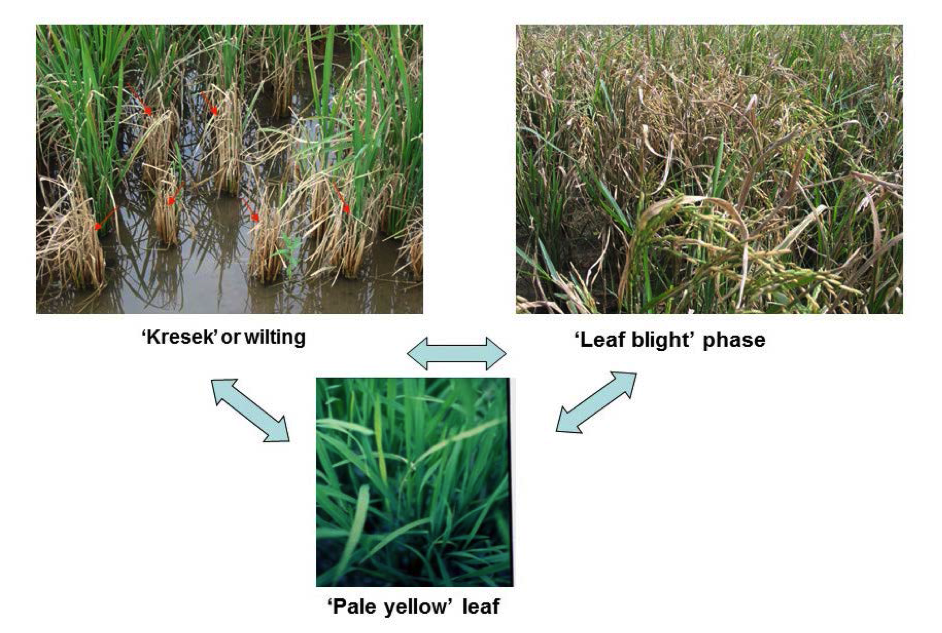Symptoms
-
Bacterial blight syndrome exhibits three types of symptoms: leaf blight, kresek (the seedling blight or wilt phase) and the pale-yellow leaf.
-
The disease has been referred to as “bacterial leaf blight” to indicate that the “leaf blight” phase of the syndrome is the most distinct and commonly observed symptom.
-
Seedlings in the nursery show circular, yellow spots in the margin, that enlarge, coalesce leading to drying of foliage.
-
“Kresek” symptom is seen in seedlings, 1-2 weeks after transplanting.
-
The bacteria enter through the cut wounds in the leaf tips, become systemic and cause death of entire seedling.
-
In grown up plants water soaked, translucent lesions appear near the leaf margin.
-
The lesions enlarge both in length and width with a wavy margin and turn straw yellow within a few days, covering the entire leaf.
-
As the disease advances, the lesions cover the entire lamina which turns white or straw coloured.
-
Milky or opaque dew drops containing bacterial masses are formed on young lesions in the early morning.
-
They dry up on the surface leaving a white encrustation.
-
The affected grains have discoloured spots.
-
If the cut end of leaf is dipped in water, it becomes turbid because of bacterial ooze.
Pathogen Character:
- The bacterium is aerobic, gram negative, non spore forming, rod with size ranging from 1-2 x 0.8-1.0m with monotrichous polar flagellum.
- Bacterial colonies are circular, convex with entire margins, whitish yellow to straw yellow colored and opaque.
Favourable conditions / Epidemiology:
- Clipping of tip of the seedling at the time of transplanting
- Heavy rain, heavy dew, flooding, deep irrigation water
- Severe wind and temperature of 25-30 0 C
- Application of excessive nitrogen, especially late top dressing
|

